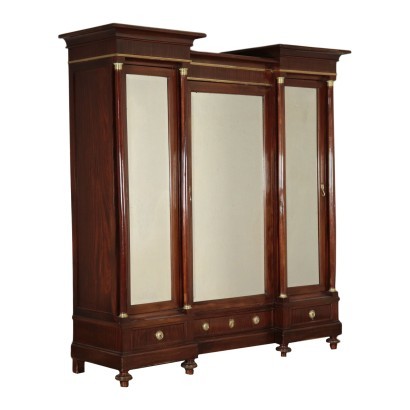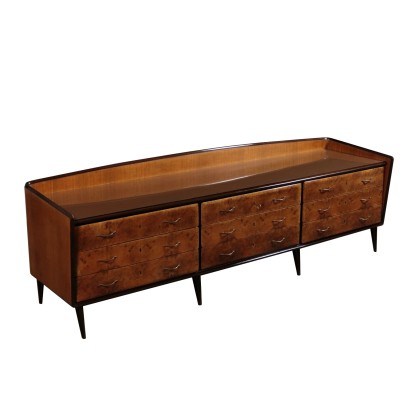Empire Style Wardrobe
Features
Style: Empire Revival
Age: 19th Century / 1801 - 1900 , 20th Century / 1901 - 2000
Origin: Italy
Main essence: Cherry , Mahogany
Description
Empire-style wardrobe, supported by feet of which the front ones are a spinning top, on the broken front it has three drawers in the lower part, surmounted by as many doors equipped with mirrors, alternating with columns that support the overlying frame. In mahogany, it is adorned with bronze applications, the interiors are in cherry.
Product Condition:
Product in fair condition showing some signs of wear.
Dimensions (cm):
Height: 245
Width: 236
Depth: 70,5
Additional Information
Style: Empire Revival
Ripresa stilistica, del 900, delle forme proprie dello stile Impero (1804-1815)Age:
19th Century / 1801 - 1900
19th Century / 1801 - 190020th Century / 1901 - 2000
20th Century / 1901 - 2000Main essence:
Cherry
Obtained from prunus cerasus , a plant of oriental origin, it is a hard wood with a light and delicate color, with a reddish vein. Due to its diffusion and availability it was used in Europe in popular furniture. In cabinet making, in the seventeenth century, it was widely used in France and England for inlay work. In Italy it was very successful in Lucca. It was also very popular in the United States for the manufacture, from the late 1600s, of commonly used furniture.The dictionary of antiques: Eclecticism
Classic Monday: a sofa from the 1800s example of eclecticism































